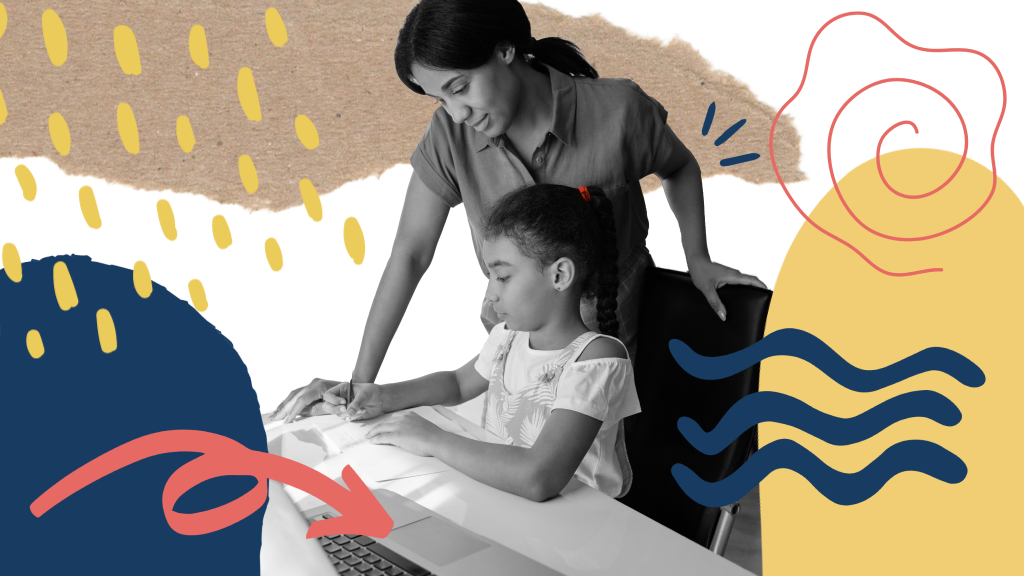Mind Map: What Does Mental Health Include?
23 Nov 2022

Mental health impacts every area of our lives and ripples out into everything we think, do, feel, and say.
Having a balanced mental state means a person can:
- Have productive, healthy relationships and make meaningful connections.
- Adapt to and cope with daily stress in life.
- Establish a positive sense of self.
- Stay motivated, physically active, and healthy.
- Be more productive at work and school.
- Work toward achieving their full potential.
However, as of 2022, one billion people worldwide are living with mental health issues — a 25% increase since pre-pandemic times. Among teenagers, an estimated one in seven ten to nineteen-year-olds experience mental health conditions.
This worrying trend poses a number of threats, from lower life expectancy to relationship difficulties, substance use, and even physical illness.
Parents and teachers can help students cultivate their mental health by understanding what contributes to it.
This article will cover the six elements of mental health defined by psychologist Carol Ryff and includes a free downloadable graphic.

The 6 Components of Mental Health
Carol Ryff developed the six-factor model of psychological well-being between 1989 and 1998. Therapists and ordinary people use the model to assess a person’s psychological well-being — in other words, their mental health.
The six factors in the model cover a variety of areas of life, including social, personal, and health-related behaviors, as well as how we respond to daily challenges and create meaningful lives.
The six factors are:
- Autonomy
- Environmental Mastery
- Personal Growth
- Positive Relations with Others
- Purpose in Life
- Self-Acceptance

Let’s take a closer look at each of them.
1. Autonomy
Autonomy refers to the ability to make independent decisions without waiting for the approval of others. A person with high levels of autonomy also regulates their behavior and is resistant to social pressure.
A high scorer in autonomy is:
- Self-determining and independent.
- Able to resist social pressures to think and act in certain ways.
- Able to evaluate themself based on personal standards.
An example statement of someone with high autonomy might be: “I have confidence in my opinions, even if they are contrary to the general consensus.”
If someone scores low in autonomy, they:
- Are concerned about the expectations and evaluations of others.
- Rely on the judgments of others to make important decisions.
- Conform to social pressures to think and act in certain ways.
An example statement of someone with low autonomy might be: “I tend to be influenced by people with strong opinions and views.”
2. Environmental Mastery
Environmental mastery is the ability to manage environmental factors and challenges, including daily organization and the ability to create situations that fulfill a person’s needs.
An example statement for someone with high environmental mastery could be: “In general, I feel I am in charge of the situation in which I live.”
If someone scores low for environmental mastery, they may:
- Have difficulty managing everyday affairs.
- Feel unable to change or improve their surrounding context.
- Be unaware of opportunities and lack a sense of control over the external world.
An example statement for a low scorer on environmental mastery might be: “The demands of everyday life often leave me feeling down.”
3. Personal Growth
Personal growth refers to our ability to make the most of our strengths and talents. It’s also the capacity to move forward in spite of challenges and see adversity as an opportunity to grow.
A high scorer for personal growth:
- Is a lifelong learner.
- Welcomes new experiences.
- Recognizes improvement in behavior and potential over time.
A high scorer for personal growth might say something like: “I think it is important to have new experiences that challenge how you think about yourself and the world.”
A low scorer for personal growth may:
- Feel stagnant.
- Lack a sense of improvement or expansion over time.
- Feel bored and uninterested in life.
- Be unable to develop new attitudes or behaviors.
An example statement of someone with a low personal growth score might be: “I gave up trying to make any meaningful changes in my life a long time ago.”
4. Positive Relations with Others
Healthy relationships are a balance of giving and receiving based on empathy, intimacy, and love.
Someone who scores high for this criterion has meaningful relationships with others. They are concerned about the welfare of others and understand the give and take of human relationships.
An example statement for them could be: “People would describe me as a giving person, willing to share my time with others”.
If someone scores low on positive relations, they:
- Have few close, trusting relationships with others.
- Find it difficult to be warm, open, and concerned about others.
- Are isolated and frustrated in interpersonal relationships.
- Aren’t willing to make compromises to sustain important ties with others.
An example statement for a low scorer on this criterion might be: “Maintaining close relationships is difficult and frustrating for me.”
5. Purpose in Life
Our purpose in life is the way we find meaning in our daily lives, as well as how we create meaningful goals that guide our actions.
A high scorer for this criterion:
- Has goals in life.
- Holds beliefs that give them a sense of purpose.
- Has a conviction that life holds meaning.
An example statement for someone who’s connected to their purpose in life might be: “Some people wander aimlessly through life, but I am not one of them.”
Someone with a low score for purpose in life:
- Lacks a sense of meaning or direction in life.
- Has few goals or aims.
- Has no outlook or beliefs that give life meaning.
An example statement for someone who lacks purpose in life could be: “I often feel that I’ve done all there is to do in life.”
6. Self-Acceptance
Self-acceptance is about having a positive attitude toward yourself, including an acceptance of your less positive aspects or difficult past experiences.
A high scorer for self-acceptance acknowledges and accepts multiple aspects of themself.
An example statement for someone with high self-acceptance could be: “I like most aspects of my personality.”
A low scorer feels dissatisfied with themself — they wish to be different than they are and are disappointed with what has occurred in the past.
An example statement for someone with low self-acceptance might be: “In many ways, I feel disappointed with what I’ve achieved in life.”
Support Student Mental Health with Lessonbee
Here at Lessonbee, we’ve created a digital poster as a resource to use with teachers and students. Click below to download it.
Read More

Human Trafficking: Understanding the Impact and How to Help

A Guide to Social Emotional Learning for Homeschooling Parents

How to Help Your Child Deal With Online Harassment

Online Safety for Parents: How to Safeguard Your Child in the Digital World


